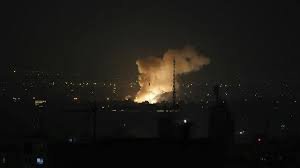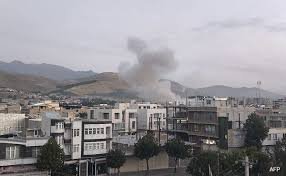
In what may forever change the strategic realities of the Middle East, Israel has carried out a colossal military operation, targeting critical Iranian nuclear sites and command-level military leadership, including its purported targeting of the army chief of Iran, General Mohammad Hossein Bagheri, with a precision strike. This also follows potentially the largest coordinated drone attack against Israeli territory — reportedly more than 100 drones launched from numerous Iranian bases in a surprise first strike — and appears to mark an unprecedented escalation in a conflict that military analysts, diplomats, and citizens long anticipated would evolve into an armed conflict.

The feared escalation has erupted into an open conflict between Israel and Iran — arguably the region’s two most militarily powerful anti-Western militaries and principal ideologically opposed nations.
The Drone Deluge
Late on Thursday night, air raid sirens wailed across central and northern Israel as a swarm of more than 100 Iranian drones flooded Israeli airspace. Israeli defense systems, including the Iron Dome and David’s Sling, were activated across multiple fronts.
The Israeli Defense Forces (IDF) reported that while a majority of the drones were intercepted, several breached the defense net, causing damage to civilian infrastructure in Haifa, Be’er Sheva, and parts of Tel Aviv’s industrial zone. There are still ongoing assessments of casualties; initial reports indicate that there have been at least 14 injuries and at least two deaths.
This is the first time Iran has actively participated in a coordinated aerial attack of this scale directed at Israeli territory. Israeli officials have stated that this is “an act of war.”
Nuclear Sites and Commanders Struck
In response, Israel quickly followed with a multi-wave aerial assault on significant Iranian nuclear development locations at Natanz, Fordow, and Arak. The strikes reportedly used bunker-busting munitions and long-range ballistic precision missiles capable of penetrating deep underground facilities.
Sources within the Israeli military claim the attack was not just symbolic. According to IDF spokesperson Lt. Col. Ariel Maimon, “We hit the heart of Iran’s nuclear ambitions. Facilities crucial to uranium enrichment and weaponization efforts were destroyed. This was a clear and calculated strike to cripple any immediate nuclear threat.”
Top Iranian Commander Likely Killed
Perhaps the most shocking and consequential outcome of the Israeli retaliation is the reported death of General Mohammad Hossein Bagheri, Chief of Staff of the Iranian Armed Forces. Iranian media have not officially confirmed his death, but multiple military intelligence reports suggest that Bagheri was present at a high-security command center near Isfahan, which was obliterated in one of the precision airstrikes.
If verified, this would mark the most significant decapitation strike against Iran’s military leadership since the assassination of Qasem Soleimani in 2020. Bagheri, who is regarded as the architect of Iran’s asymmetric warfare strategy and a principal organizer of its regional proxy networks, would be a phenomenal loss for the Islamic Republic.
A Region at the Brink
Both nations now have their military on complete alert. Iran has vowed a “crushing response,” while Israel has activated reserve units and placed its northern and southern borders under lockdown.
Global powers, including the United States, Russia, and China, have called for immediate de-escalation. U.S. Secretary of State Antony Blinken condemned the Iranian drone attack but urged restraint on both sides: “We urge both Israel and Iran to step back from the edge. The consequences of a full-scale war would be catastrophic — not just for the region but for the world.”
The Imminence of a Ticking Clock
Tensions between Israel and Iran have existed for years, the former seeking to counter Iranian influence while Iran looks to increase the stakes in regards to Israel; however, it can. All the while, there have been flashpoints in Syria, Lebanon, Iraq, and Gaza, which often act as proxy battlegrounds. However, recent intelligence assessments claiming that Iran’s nuclear program had passed a key threshold could have driven Israel’s decision to act with urgency in possibly taking pre-emptive measures.
Earlier this week, leaked satellite images showed unusual activity at Iran’s Fordow facility, and Western intelligence hinted that Iran may have reached uranium enrichment levels close to weapons-grade. With Iran’s more forceful posture in the region and its increasingly deepening relationship with Russia and China, Israel may have felt that it could no longer afford to wait.
The Human Cost and the Way Forward
The human cost of this conflict is beginning to settle in as Isfahan and Tel Aviv are left in smoke and ashes. People have lost their lives, and perhaps most tragically, millions of people in both countries now live in fear of future escalations.
International mediators, the United Nations, the European Union, etc., have begun searching for ways to gain diplomatic access; meanwhile, the internet is flooded with video clips of destroyed buildings and downed drones, and people calling for peace.
The Israel-Iran conflict has now moved from the shadows into an overt conflict. Both sides have powerful allies and advanced military capabilities, and the world is watching with concern. What started as a swarm of drones could end with either the region’s most deadly war in decades or a critical moment of de-escalation.
One thing is for sure: West Asia will never be the same again.
FOR MORE UPDATES, VISIT QUESTIQA.COM




